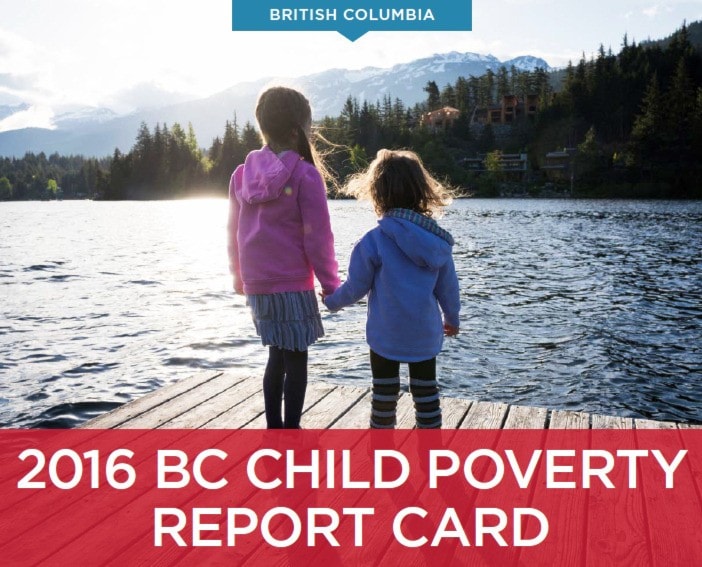Prince Rupert has the second-worst urban area child-poverty rate in the entire province.
That’s one of the conclusions drawn from the 2016 BC Child Poverty Report Card, produced by First Call: BC Child and Youth Advocacy Coalition, released in late November.
It’s also part of a broader figure that finds one in five children in B.C. facing impoverished conditions.
In the Prince Rupert area, the child poverty rate was cited as 30 per cent. That’s tied for second in all of B.C. with Port Alberni and only behind Duncan (31 per cent).
It’s almost more than double the urban area with the lowest child poverty rate – Fort St. John at 12 per cent.
However, despite Prince Rupert’s high numbers, the area encompassing the North Coast Regional District improved its child poverty rate by 32.5 per cent, and ranked as the sixth-best regional district in B.C. for the least percentage of children (age 0-17) living in low-income families.
The numbers collected are based on Statistics Canada’s 2014 findings of low income cut-offs (LICOs), low-income measures (LIMs) (both before- and after-tax) and the Market Basket Measure (MBM). Canada has no official singular method of measuring poverty.
First Call called on the provincial government to develop a strategy to address child poverty, as B.C. is the only province in Canada without a poverty reduction plan.
The province’s overall child poverty rate is 1.5 per cent higher than the Canadian average of 18.5 per cent, but dropped 0.6 per cent since 2015’s report (which measured using 2013 statistics). 4,550 fewer children were impoverished from 2013 to 2014.
First Call recommends the government raise minimum wage to $15 an hour immediately, raise income and disability rates to fit in line with actual expenses, increase funding for First Nations child welfare, education and community health services, implement a $10/day child care plan, increase the maternity and parental leave benefit level to 70 per cent of employment income.
It also recommended local municipalities that all youth aging out of care have a chance to connect and contribute to the community and increase efforts to provide housing to low-income residents.
Dr. Raina Fumerton, Northern Health northwest medical health officer, supports a provincial poverty reduction strategy and sees the impacts of child poverty everyday with her colleagues.
“As a public health physician, we as medical health officers, one of our roles is to advocate around child poverty, specifically. A lot of the recommendations that came out of the report are all very good and certainly would support a provincial poverty reduction strategy,” she said.
Dr. Fumerton explained that problems at home can lead to all sorts of problems for a child facing poverty.
“Poverty can cause toxic stress. Toxic stress [occurs] when a child experiences prolonged adversity, physical or emotional abuse, substance abuse from parents, exposure to violence – [all] accumulated burdens of poverty,” she said.
“These types of prolonged stresses can disrupt the brain architecture of kids and increases risk of stress-related diseases.”
The City of Prince Rupert has been coordinating affordable housing initiatives for societies and First Nations to get more provincially funded housing units for the area. The Kaien Anti-Poverty Society also assists those living in poor conditions.
“It takes a multi-jurisdictional approach to deal with poverty. I know Prince Rupert has some really strong programs to support children at risk, living in poverty ... It can’t be solved by one silo. If we work together and collaborate and break down those silos, I think a lot of good things can come of that,” Dr. Fumerton said.
First Call did not specify to the Northern View by press time if the Rupert figure included nearby villages and reserves, but data used for the report from Statistics Canada’s T1 Family File (T1FF) incorporates reserves and children in institutional settings.
- With files from Shannon Lough
